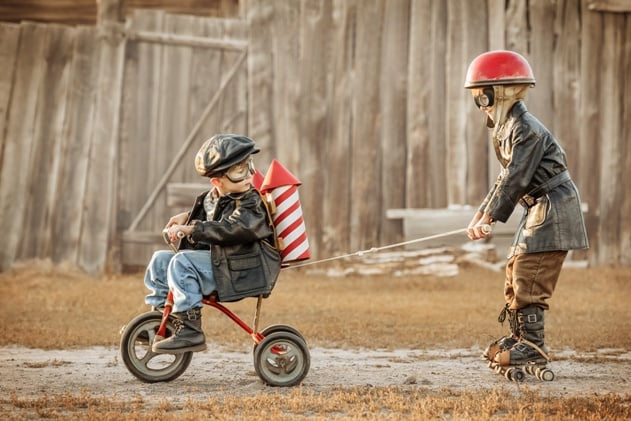
Dental trauma is defined as injury to the teeth, periodontium (gums and the other structures that keep your teeth in place), and the accompanying oral soft tissue structures like the tongue and lips.
Dental trauma is very common, especially among the school-aged population. Beyond the initial injury, significant problems such as chewing food can create long-term issues. While not all dental traumas require emergency dental care, following up with your dentist is recommended to ensure proper healing will occur. Further, prevention and understanding how to handle a dental trauma situation can greatly improve outcomes of these common and preventable incidents.
Unfortunately, one third of preschoolers, one fourth of school children and one third of adults have suffered from dental trauma in their lives (1). The reasons for dental trauma in children are numerous and include falls from bike riding, running, general falls, sports participation at younger ages including soccer, football, baseball and swimming, ADHD, epilepsy and hearing/vision impairment.
Sports are a large contributor to dental injuries (2) and are to blame for the majority of dental trauma. Children can fall or run into each other as they tend to run enthusiastically, without fully developed coordination, or not paying attention to their surroundings. Winning the race to the soccer ball takes priority over noticing that six other children are attempting the same thing.
Protect the Teeth from Dental Trauma
One of the best and most cost-effective ways to protect you and your children from these accidents is a mouth guard. There are multiple types of mouth guards, ranging from a universally fitting guard that can be purchased from a local pharmacy to the custom fitting, dentist fabricated and adjusted mouth guard. Many sports such as football and hockey require the use of a mouth guard, but any athlete or weekend warrior could benefit from the safety a mouth guard provides. Just like children must wear helmets when riding a bicycle, parents would be wise to insist on a mouth guard too for bike riding and other sports.
What to do in a Dental Emergency
If you or your child experience a dental emergency, here are a few things to keep in mind to avoid dental trauma:
Loose tooth: If you have a tooth that is loose or out of alignment, you should call your dentist for an emergency appointment right away.
Knocked-out tooth: This is a dental emergency that requires urgent attention.
-
Find the tooth and pick it up by the crown (the white part). Avoid touching the root.
-
Rinse the tooth under cold running water and reposition it. If possible, replant the tooth in the socket. Bite on a clean piece of clothing to hold it in position.
-
If this is replanting is not possible, place the tooth in a suitable storage medium, such as a glass of milk or a special storage media for avulsed teeth if available (Hanks balanced storage medium or saline). The tooth can also be transported in the mouth, keeping it between the molars and the inside of the cheek. If the patient is very young, he/she could swallow the tooth- therefore it is advisable to get the patient to spit in a container and place the tooth in it. Avoid storage in water!
-
Seek emergency dental treatment immediately. (3)
Broken, chipped or cracked tooth: If a tooth is chipped and doesn’t hurt, this usually does not constitute a dental emergency and you may be able to wait a few days to see a dentist, but call immediately. However, it is important to be careful while chewing so as not to chip it more. A cracked or fractured tooth is a serious issue constituting a dental emergency; call your dentist immediately for an emergency appointment.
Loose or lost crown or filling: A loose crown or filling doesn't necessarily constitute a dental emergency; however, you should call or see your dentist as soon as possible.
Mouth, tongue or gum injury: Any trauma to the mouth that causes bleeding that can't be controlled with pressure or cold compress may require immediate medical attention. Call your dental office for an appointment.
Download the Dental App
The International Association of Dental Traumatology also has a mobile app that can be downloaded called IADT ToothSOS. This is a useful tool for any parent or coach with instant information on how to handle dental trauma situations.
If you have a dental emergency, please call us at 202-237-7000, ext. 2.
1 Glendor U. Epidemiology of traumatic dental injuries – a 12-year review of the literature. Dent Traumatol 2008;24:603-11
2 Eilert-Petersson E, Andersson L, Sörensen S. Traumatic oral vs. non-oral injuries. An epidemiologic study during one year in a Swedish county. Swed Dent J 1997;21:55-68.
3 https://dentaltraumaguide.org/free-dental-guides/permanent-teeth/avulsion/
.png?width=305&height=132&name=NIHAlogoBLUE_3_transparent%20(2).png)

